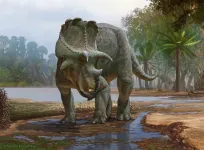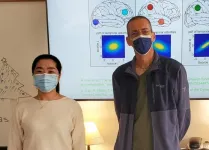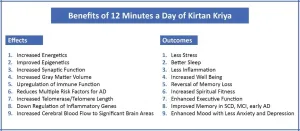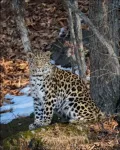(Press-News.org) A newly described horned dinosaur that lived in New Mexico 82 million years ago is one of the earliest known ceratopsid species, a group known as horned or frilled dinosaurs. Researchers reported their find in a publication in the journal PalZ (Paläontologische Zeitschrift).
Menefeeceratops sealeyi adds important information to scientists' understanding of the evolution of ceratopsid dinosaurs, which are characterized by horns and frills, along with beaked faces. In particular, the discovery sheds light on the centrosaurine subfamily of horned dinosaurs, of which Menefeeceratops is believed to be the oldest member. Its remains offer a clearer picture of the group's evolutionary path before it went extinct at the end of the Cretaceous.
Steven Jasinski, who recently completed his Ph.D. in Penn's Department of Earth and Environmental Science in the School of Arts & Sciences, and Peter Dodson of the School of Veterinary Medicine and Penn Arts & Sciences, collaborated on the work, which was led by Sebastian Dalman of the New Mexico Museum of Natural History and Science. Spencer Lucas and Asher Lichtig of the New Mexico Museum of Natural History and Science in Albuquerque were also part of the research team.
"There has been a striking increase in our knowledge of ceratopsid diversity during the past two decades," says Dodson, who specializes in the study of horned dinosaurs. "Much of that has resulted from discoveries farther north, from Utah to Alberta. It is particularly exciting that this find so far south is significantly older than any previous ceratopsid discovery. It underscores the importance of the Menefee dinosaur fauna for the understanding of the evolution of Late Cretaceous dinosaur faunas throughout western North America."
The fossil specimen of the new species, including multiple bones from one individual, was originally discovered in 1996 by Paul Sealey, a research associate of the New Mexico Museum of Natural History and Science, in Cretaceous rocks of the Menefee Formation in northwestern New Mexico. A field crew from the New Mexico Museum of Natural History and Science collected the specimen. Tom Williamson of the New Mexico Museum of Natural History and Science briefly described it the following year, and recent research on other ceratopsid dinosaurs and further preparation of the specimen shed important new light on the fossils.
Based on the latest investigations, researchers determined the fossils represent a new species. The genus name Menefeeceratops refers to the rock formation in which it was discovered, the Menefee Formation, and to the group of which the species is a part, Ceratopsidae. The species name sealeyi honors Sealey, who unearthed the specimen.
Menefeeceratops is related to but predates Triceratops, another ceratopsid dinosaur. However Menefeeceratops was a relatively small member of the group, growing to around 13 to 15 feet long, compared to Triceratops, which could grow to up to 30 feet long.
Horned dinosaurs were generally large, rhinoceros-like herbivores that likely lived in groups or herds. They were significant members of Late Cretaceous ecosystems in North America. "Ceratopsids are better known from various localities in western North America during the Late Cretaceous near the end of the time of dinosaurs," says Jasinski. "But we have less information about the group, and their fossils are rarer, when you go back before about 79 million years ago."
Although bones of the entire dinosaur were not recovered, a significant amount of the skeleton was preserved, including parts of the skull and lower jaws, forearm, hindlimbs, pelvis, vertebrae, and ribs. These bones not only show the animal is unique among known dinosaur species but also provide additional clues to its life history. For example, the fossils show evidence of a potential pathology, resulting from a minor injury or disease, on at least one of the vertebrae near the base of its spinal column.
Some of the key features that distinguish Menefeeceratops from other horned dinosaurs involve the bone that make up the sides of the dinosaur's frill, known as the squamosal. While less ornate than those of some other ceratopsids, Menefeeceratops' squamosal has a distinct pattern of concave and convex parts.
Comparing features of Menefeeceratops with other known ceratopsid dinosaurs helped the research team trace its evolutionary relationships. Their analysis places Menefeeceratops sealeyi at the base of the evolutionary tree of the centrosaurines subfamily, suggesting that not only is Menefeeceratops one of the oldest known centrosaurine ceratopsids, but also one of the most basal evolutionarily.
Menefeeceratops was part of an ancient ecosystem with numerous other dinosaurs, including the recently recognized nodosaurid ankylosaur Invictarx and the tyrannosaurid Dynamoterror, as well as hadrosaurids and dromaeosaurids.
"Menefeeceratops was part of a thriving Cretaceous ecosystem in the southwestern United States with dinosaurs that predated a lot of the more well-known members closer to end of the Cretaceous," says Jasinski.
While relatively less work has been done collecting dinosaurs in the Menefee Formation to date, the researchers hope that more field work and collecting in these areas, together with new analyses, will turn up more fossils of Menefeeceratops and ensure a better understanding of the ancient ecosystem of which it was part.
INFORMATION:
Peter Dodson is a professor of anatomy in the School of Veterinary Medicine and a professor of earth and environmental science in the School of Arts & Sciences at the University of Pennsylvania.
Steven E. Jasinski is a curator of paleontology and geology at the State Museum of Pennsylvania and corporate faculty at Harrisburg University of Science and Technology. He earned his doctoral degree in the Department of Earth and Environmental Science in the University of Pennsylvania's School of Arts & Sciences.
Sebastian G. Dalman is a research associate at the New Mexico Museum of Natural History and Science in Albuquerque.
Spencer G. Lucas is a curator of paleontology at the New Mexico Museum of Natural History and Science in Albuquerque.
Asher J. Lichtig is a research associate at the New Mexico Museum of Natural History and Science in Albuquerque.
Jasinski was supported by Geo. L. Harrison and Benjamin Franklin fellowships while attending the University of Pennsylvania. The research was also partially funded by a Walker Endowment Research Grant and a University of Pennsylvania Paleontology Research Grant.
Researchers have developed a global earthquake monitoring system that uses the Global Navigational Satellite System (GNSS) to measure crustal deformation.
The monitoring system within seconds can rapidly assess earthquake magnitude and fault slip distribution for earthquakes of magnitude 7.0 and larger, making it a potentially valuable tool in earthquake and tsunami early warning for these damaging events, Central Washington University geophysicist Timothy Melbourne and colleagues report in the Bulletin of the Seismological Society of America.
GNSS can potentially characterize a large earthquake much more rapidly than the global seismic network, ...
Covid-19 patients who receive oxygen therapy or experience fever show reduced gray matter volume in the frontal-temporal network of the brain, according to a new study led by researchers at Georgia State University and the Georgia Institute of Technology.
The study found lower gray matter volume in this brain region was associated with a higher level of disability among Covid-19 patients, even six months after hospital discharge.
Gray matter is vital for processing information in the brain and gray matter abnormality may affect how well neurons function and communicate. The study, published in the May 2021 issue of Neurobiology ...
A new approach to road safety that relies on design and engineering principles--the "Safe System" approach--could lead to dramatic reductions in vehicle-related deaths and injuries if implemented in the U.S., according to a report from a consortium of experts convened by researchers at Johns Hopkins Bloomberg School of Public Health and the Institute of Transportation Engineers.
The Safe System approach engineers road systems so that they are safe when used intuitively, the way people tend to use them. A Safe System minimizes the chances for mistakes by drivers, pedestrians, and bicyclists, and reduces the intensity ...
Marie-Claude Bourgeois-Daigneault and her team at the CRCHUM are using mice to show how a combination of peptides and oncolytic viruses, used as an adjuvant, can provide effective immunization against cancer.
In her laboratoryat the University of Montreal Hospital Research Centre (CRCHUM), Marie-Claude Bourgeois-Daigneault and a team of scientists usually modify viruses to make them specific to the cells of a tumour.
Once in the patient's body, these viruses, called oncolytic viruses, infect and specifically destroy the cancer cells without touching healthy cells. These viruses can even stimulate the immune system so that it is better armed to recognize and kill malignant cells. This is immunotherapy.
In a study published in Nature Communications, the scientific team at the University ...
NEW YORK (May 11, 2021) - A group of scientists say now is the time to talk about reintroducing jaguars (Panthera onca) into the U.S.
In a study published today in the journal Conservation Science and Practice, the authors provide a prospective framework for this effort and describe "righting a wrong" done to "America's Great Cat" in the Southwest more than 50 years ago. The big cats lived for hundreds of years in the central mountains of Arizona and New Mexico but were driven to local extinction by the mid-20th century, in part because of killing by government hunters.
Authors of the study include a diverse set ...
Amsterdam, May 11, 2021 - It is projected that up to 152 million people worldwide will be living with Alzheimer's disease (AD) by 2050. To date there are no drugs that have a substantial positive impact on either the prevention or reversal of cognitive decline. A growing body of evidence finds that targeting lifestyle and vascular risk factors have a beneficial effect on overall cognitive performance. A new review in the Journal of Alzheimer's Disease, published by IOS Press, examines research that finds spiritual fitness, a new concept in medicine that centers on psychological and spiritual wellbeing, and Kirtan Kriya, a simple 12-minute meditative practice, may reduce multiple risk factors for AD.
"The key point of this review is that making a commitment ...
DNA is composed of nucleobases represented by the letters A, T, G and C. They form the basis of the genetic code and are present in all living beings. But in a bacteriophage, another base, represented by the letter Z, exists. This exception, the only one observed to date, has long remained a mystery. Scientists from the Institut Pasteur and the CNRS, in collaboration with the CEA, have now elucidated the biosynthesis pathway of this base. This work has been published in the April 30th, 2021 issue of Science.
DNA, or deoxyribonucleic acid, is a molecule ...
Study Take-Aways:
Different African populations were genetically interrelated suggesting abundant gene flow across Africa such that all African population should be considered together as single subspecies.
There appeared a striking genomic distance between leopards living in Asia vs. leopards in Africa.
Asian leopards are more genetically separated from African leopards than brown bear species are from polar bear species, the researchers found.
The two leopard groups actually diverged around the same time as Neanderthals split apart from modern humans.
The genetic differences between African and Asian leopards have been maintained ...
It took an unlikely food innovation -- earth-friendly vegetarian patties, made to taste and "bleed" like the familiar meaty ones -- to make people aware of heme.
But heme is an essential part of proteins found in most life forms, from tiny bacteria to soy plants to the human body. Heme plays a crucial role in supplying cells with the energy needed to carry out chemical reactions.
In human cells, iron-containing heme is the essential cofactor of two types of molecules. One is the hemoglobin molecules that bind oxygen in the lungs and ferry it around the body. More than half ...
ALBUQUERQUE, N.M. -- Two groups of researchers at Sandia National Laboratories have published papers on the droplets of liquid sprayed by coughs or sneezes and how far they can travel under different conditions.
Both teams used Sandia's decades of experience with advanced computer simulations studying how liquids and gases move for its nuclear stockpile stewardship mission.
Their findings reinforce the importance of wearing masks, maintaining social distancing, avoiding poorly ventilated indoor spaces and washing your hands frequently, especially with ...





